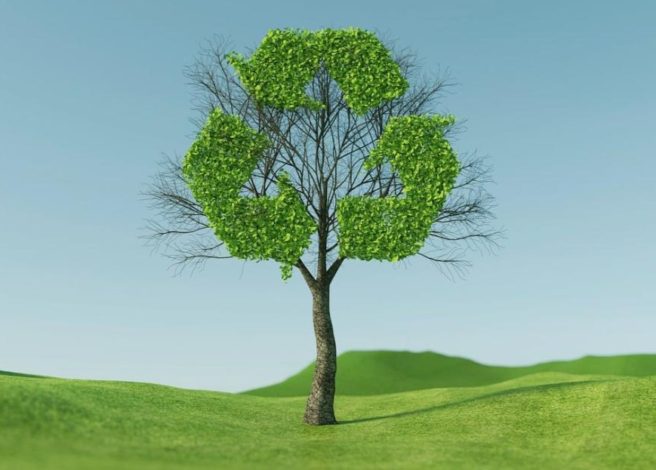At a Glance
- Know the stream, not just recyclability — understanding whether packaging enters single-stream or dual-stream recycling affects actual recovery rates.
- Plastic types 1, 2, and 5 are key — PET, HDPE, and PP need proper sorting to avoid contamination in recycling plants.
- Modern sorting tech matters, but consumer behavior (and contamination) largely determines what actually gets recycled.
- Smart packaging choices = stronger sustainability claims, better alignment with regulations, and improved brand reputation.
Imagine being in your food packaging facility. You watch as pallets of neatly packaged products roll off the line. Each container tells a story of innovation, quality, and brand excellence. But here’s the twist — a secret sequel is in the works. It could be an environmental success story or a cautionary tale that might make Mother Nature cringe. Welcome to the world of recycling streams! Your packaging can get either applause or a one-way trip to Dumpstertown (sorry if that’s your city’s real name).
As a food industry expert, you’re in a tough spot. Demand for sustainable packaging is soaring. At the same time, regulations are tightening. Plus, your profits rely on choosing the right materials. Yet navigating the complex world of recycling feels like trying to read a roadmap written in hieroglyphics.
The truth is that many people in the food business don’t know how their packaging moves through recycling processes. You might know your containers are “recyclable,” but do you know which stream they enter, or why that matters for your brand’s environmental impact?
Getting Answers
This week, we interviewed Madelyn Hart, Outreach Specialist at USA Waste & Recycling. Since joining in 2023, she has focused on environmental education, working with municipalities, schools, and businesses to promote better waste and recycling practices. Through program development and community partnerships, she aims to improve public understanding of waste management. Madelyn holds a Master’s in Public Administration from the University of Connecticut.
Today, we’ll unravel the mystery of single and dual streams, see why plastic containers can be tricky, and share the high-tech sorting secrets that can impact your packaging’s recycling journey.
Now, let’s grab our scientific SCUBA gear and dive into the world of recycling streams.
What Exactly Is a Recycling Stream?
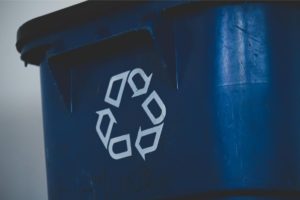 It’s a valid question. Think of a recycling stream as the journey your packaging takes from when a consumer tosses it in their bin to when it becomes a new product. The entire flow — collection, sorting, processing, and remanufacturing — breathes new life into materials.
It’s a valid question. Think of a recycling stream as the journey your packaging takes from when a consumer tosses it in their bin to when it becomes a new product. The entire flow — collection, sorting, processing, and remanufacturing — breathes new life into materials.
But here’s where it gets interesting: not all streams are created equal.
Single-Stream vs. Dual-Stream Collection
Single-stream collection is like the express lane of recycling. All recyclable materials — paper, plastic containers, metal, and glass — go into one bin. Consumers love it because it’s simple, and participation rates soar when people don’t have to think too hard about sorting.
Dual-stream collection sorts materials into two types. Paper products are collected one week, and containers are collected the next. While this method can produce cleaner materials (imagine a newspaper soaked with leftover yogurt — not exactly premium recycling material), it’s more complex for consumers and often results in lower participation rates.
Most modern facilities, like USA Waste & Recycling’s All American Materials Recovery Facility (MRF), prefer single stream because simplicity drives participation. After all, what good is a technologically sophisticated sorting system if half your materials end up in landfills because consumers are confused?
The Plastic Stream: Where Food Packaging Really Flows
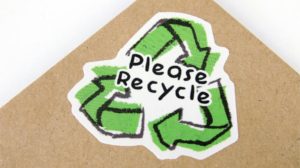 The plastic recycling stream is really where the magic happens (yes, the other material streams are fascinating, but we’re plastic enthusiasts here!). The types of plastic material that typically gets collected at most facilities are:
The plastic recycling stream is really where the magic happens (yes, the other material streams are fascinating, but we’re plastic enthusiasts here!). The types of plastic material that typically gets collected at most facilities are:
- Number 1 plastics (PET-polyethylene terephthalate): Your water bottles, juice containers, and food packaging
- Number 2 plastics (HDPE-high-density polyethylene): Milk jugs, cleaning products, and detergent bottles
- Number 5 plastics (PP-polypropylene): Increasingly accepted, including yogurt containers and produce packaging
The Tech Revolution You Need to Know About
Modern recycling facilities aren’t your grandfather’s sorting plants. Many of today’s operations use optical sorting systems to identify materials by their polymer makeup. They also use AI scanners that can spot items traditional systems might miss. Some facilities even use laser technology to identify black plastic — previously invisible to sensors against black conveyor belts. It’s important to note that not all MRFs (Material Recovery Facilities — where your recycling ends up for sorting) have this high-end tech. Each MRF has unique sorting capabilities.
This technology means your packaging decisions impact recovery rates in real-time. Choose packaging with these systems in mind, and your containers will flow smoothly through the stream. Ignore them, and your “recyclable” packaging might end up in Landfillburg (another unfortunate town name if it’s real).
Best Practices That Actually Make a Difference
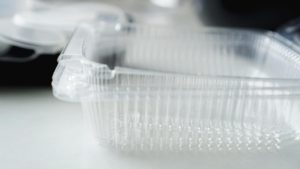 For food industry pros, here are some tips that can help ensure your packaging ends up in the right place for proper stream efficiency.
For food industry pros, here are some tips that can help ensure your packaging ends up in the right place for proper stream efficiency.
Select for the stream: Choose materials that align with existing collection systems. Plastics numbers 1 and 2 (those numbers on your packaging inside a triangle of arrows) flow easily in most streams. However, mixed materials or exotic polymers can turn into costly waste.
Consider size matters: Items under two inches typically get screened out as “residue.” That tiny plastic cap? It needs to stay attached to have any chance of being recycled.
Think regional: Collection and processing capabilities vary dramatically by region. What works in Connecticut may not fit rural Maine. There, residents take materials to transfer stations that have many sorted categories. Some municipalities have no access to curbside recycling. According to the 2024 State of Recycling Report by The Recycling Partnership, approximately 27% of U.S. households lack access to recycling services.
Go for single-material solutions: The simpler your packaging is, the better it works in recycling.
Most importantly, you can reach out to your local recycling facility to learn more about what they are capable of accepting and processing.
The Hidden Economics of Streams
Many food business pros don’t realize that recycling facilities are businesses driven by commodity markets. They invest in technology to capture valuable materials and adjust their systems when new markets emerge.
Modern facilities are built like Legos — modular systems that can adapt to new opportunities. When USA Waste & Recycling found that small metals were being lost as residue in the glass stream, they acted fast to recover the materials. They quickly installed new belts and magnets. That adjustment allowed them to capture thousands of pounds of material that was once not recoverable. This is just an example of how these systems can expand recycling potential, given the proper means.
Your packaging choices directly impact these economics. Select materials with strong end markets, and you’ll support a system that can handle more of your packaging. Choose materials without clear markets, and you’ll contribute to system strain.
Heading Upstream
Understanding recycling streams goes beyond compliance and marketing. It’s about designing packaging that genuinely supports the circular economy. Every container you create is casting a vote for the kind of recycling infrastructure we build.
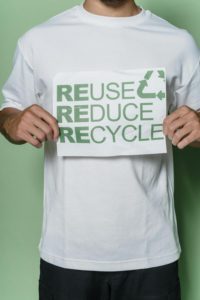 The most successful food businesses already think like stream designers. They choose materials that work smoothly, collaborate with suppliers who consider end-of-life factors, and select packaging that recycling centers can process.
The most successful food businesses already think like stream designers. They choose materials that work smoothly, collaborate with suppliers who consider end-of-life factors, and select packaging that recycling centers can process.
Recycling streams are more than an idea. They are the clear paths that decide whether your sustainability efforts succeed or remain just wishes. Master the streams, and you will master the art of packaging that truly serves your brand and the planet.
Your containers are about to embark on a journey through these streams. Make sure they’re equipped for success.
Are you interested in learning more about USA Waste & Recycling? Visit their website today or contact them directly!
Want to learn more about packaging sustainability? Visit the Inline Plastics Learning Center today!

